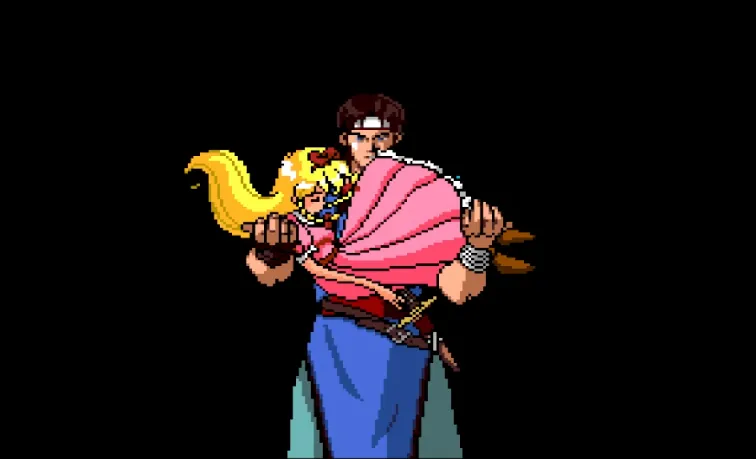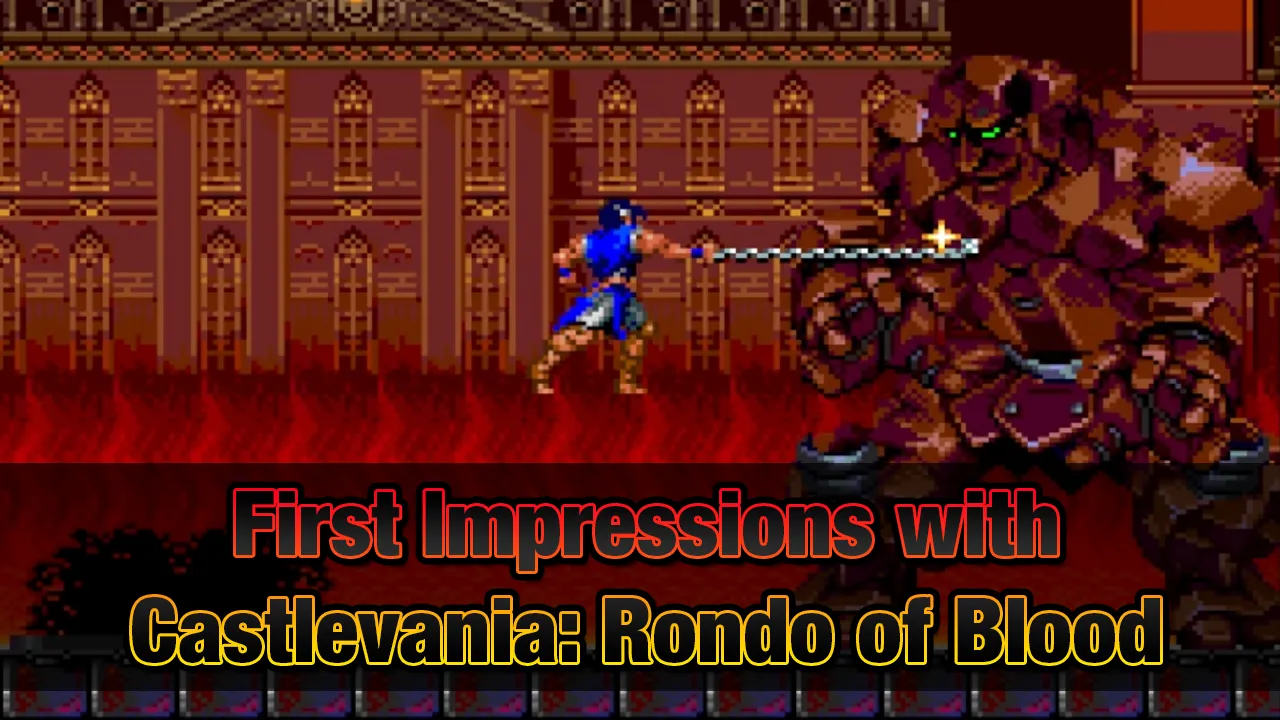

As I recently watched Castlevania Nocturne, the animated series that's "based on Rondo of Blood" (using the direct protagonists of Rondo but otherwise repurposes the character names and basic plot of the games into something new, similar to the original Castlevania series), I was immediately left curious to try this game out knowing that I would have to wait a year (or more) for a second season...
...And that's how I ended up playing for the first time what's considered one of the best Castlevania games ever made.
As the only classic Castlevania game I had played (and completed) was Castlevania: The Adventure Rebirth for the Wii years ago, I had the expectation that it would be a tough-as-bones game as other old Castlevania games are talked about...but the reputation of this game ended up being completely justified as everything clicked just right.
The satisfaction of a tough but fair challenge
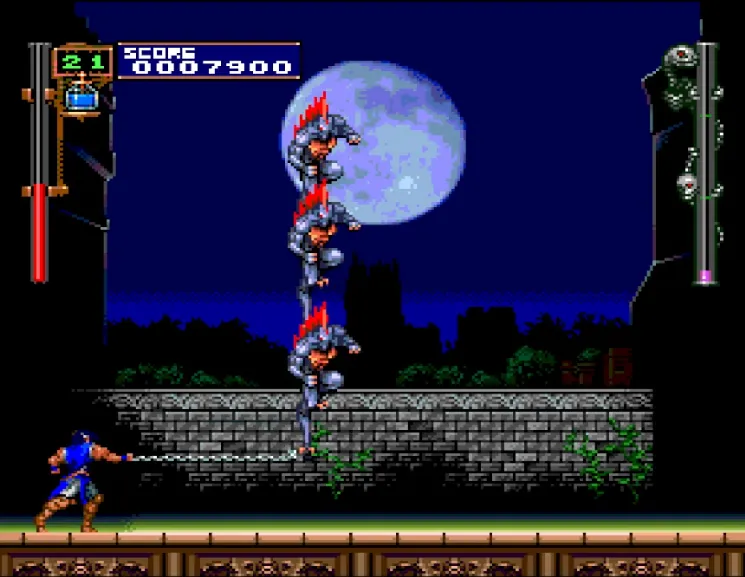
I would compare my initial experience to that when I played NES Contra: Many trial-and-error deaths on what seemed to be trick after trick, but eventually I had everything in mind and after several practice sessions to execute my strategies, I was manage to beat Contra without savestates AND without the Konami Code for the first time. That game does have cheap shots here and there but compared to its reputation, it felt more like having to learn how to tackle things over several attempts rather than being constantly bombarded with completely blind shots.
But this game not only has the benefit of unlimited continues and a save system per stage, but also has the surprise of being very precise with its level design.
From the first four levels I've played so far, the game hadn't thrown me blind jumps into pits below me, sudden enemies ambushing out of nowhere or copious bottomless pit platforming (which might come later), but there was a clear intent instead on the enemies you had to face, level setpieces and how you might realize these stages seem to give more breathing room than expected as they have the bosses ready to jump you at the end of them. Maybe even after death?
! [Surprise ruining button] To be clear, they definitely do even after death (except for the dragon at Stage 1). But that made for the insanely funny tale of somehow having survived Stage 2 and 3 bosses both going kamikaze on me and leaving me at one or two pixels of health after I finished them off.
I could already tell the game feels much more premium with the presentation complementing the levels being much more focused on a fair challenge than "hop on tiny bricks while flying enemies want to knock you out" (I've also been playing Dracula X these days, and now I can really tell the difference between that and Rondo's levels).
If the game has been too though for you though and would want to make things easier for your first playthrough, then make sure to rescue Maria. If you don't know how to find her at the second stage...
! [Hidden Spoiler Text] You might find a key at one point while playing (will act as your sub-weapon) and you might also stumble upon a locked door. They aren't far away from each other, either.
And once you do, then not only you have rescued one out of the four maidens of the game (yes, four) for full completion, but also...
Need some mercy? Better Call Maria!
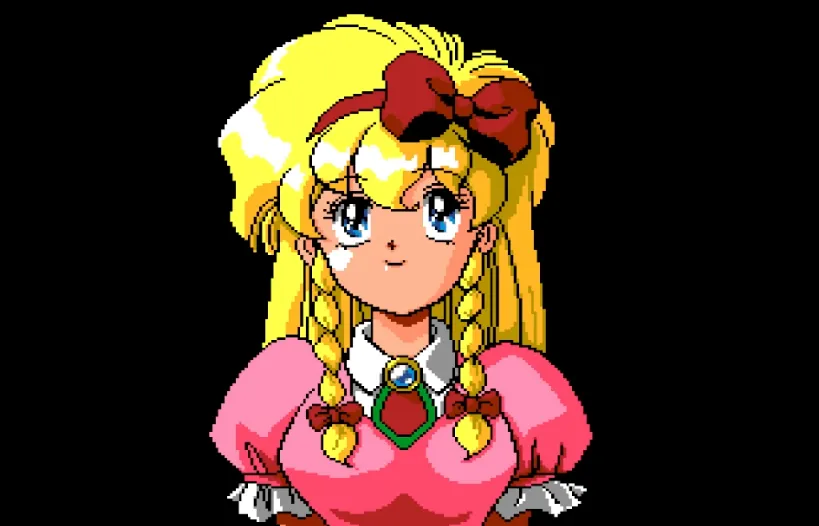
Instead of being just another checkmark on your adventure, freeing her will actually unlock her as a playable character. And while she has less health, she more than makes up for it with having a double jump, slides, and ranged attacks with her animal companions.
She's essentially an "easy mode" alternative to Richter which you can opt to play as at the main menu and revisit previous stages to search for alternate paths (because I didn't know this until I checked the level select screen, but some stages have alternate paths for brand new stages), or just keep playing until the end to make a full tour course of Dracula's castle less strenous.
And while I haven't played with her to see these cutscenes myself (yet), she even seems to have some of her own cutscenes when playing instead of having none (as some games with extra bonus characters tend to have), so even this doesn't feel like a half-assed inclusion.
Going back to Richter though, and the aforementioned presentation...
The full power of 16-bit and a CD-ROM

Rondo of Blood was made for the PC-Engine CD (overseas known as the TurboGrafx-CD), which allowed this game to flex a lot of levels, mostly animated cutscenes and a wide variety of 16-bit goodness with the great looking envirooments paired with a key feature from the CD format taken full advantage of: Redbook Audio for crispy high-quality music.
It is not that standard music from 16-bit consoles aren't inferior, don't get me wrong (heck, Dracula X has a few renditions from this game that still sound great on the Super Nintendo), but some areas really get quite the extra oomph of ambience with a mix of remade classic songs and brand new compositions for the game.
The only thing I'd say that might feel odd today is how voices in gameplay (from your character and from enemies/bosses that have one) might sound bit crushed due to the console's limitations, but otherwise the fidelity of the presentation might as well be closer to a Saturn/PS1 game (or even a modern throwback to these retro games) than what you'd expect to be a 1993 game paired with the full quality music.
Then again, Rondo of Blood itself clearly is the milestone of many years of refining the gameplay, level design, graphics and even the evolution of both consoles and 2D games as far as 1993. One that was unfortunately hidden back in its day internationally because the game was exclusive to Japan, only the inferior Castlevania: Dracula X for the SNES being released in its place. But today with the power of emulation, as well as re-releases (from the Dracula X Chronicles remake for PSP that also included the original as an unlockable, to Castlevania Requiem having both this and Symphony of the Night), is finally available to everyone for their enjoyment.
Conclusion
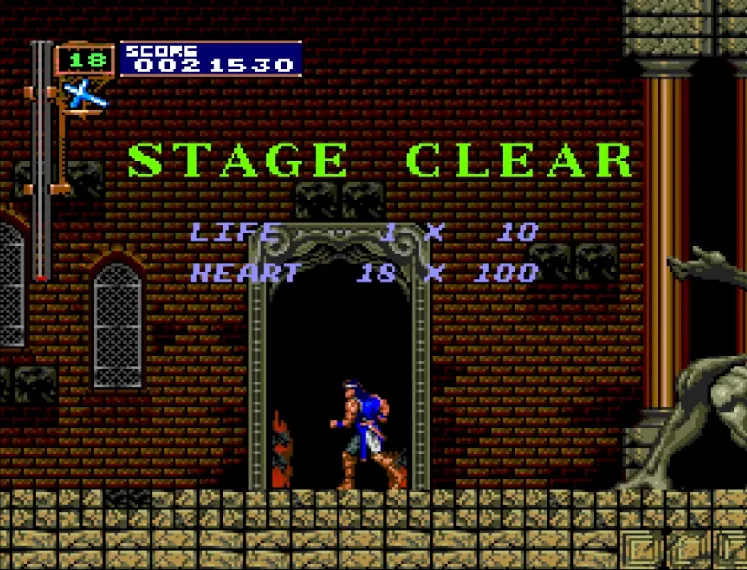
I would definitely recommend this one alongside Castlevania The Adventure Rebirth for "Classicvania" games to play for the first time; whether I'll survive NES Castlevania or Japanese Castlevania III (not going to shoot myself in the foot with playing a cheaper version) is something I'll have to see later...but in any case I can now confirm that the reputation this legendary game has attained throughout the years has been very well deserved.
That, and that Dracula X for the SNES is like a McDonalds meal compared to the carefully grilled home-made delicacy that this game is (not terrible but way less ingenious or fair)...but I'll have to tell you about that another day.
Thanks for reading!

Spanish translation with DeepL. All screenshots were captured by myself.
Español
Como hace poco vi Castlevania Nocturne, la serie de animación que está "basada en Rondo of Blood" (utiliza a los protagonistas directos de Rondo pero, por lo demás, reutiliza los nombres de los personajes y la trama básica de los juegos en algo nuevo, similar a la serie original de Castlevania), inmediatamente me entró curiosidad por probar este juego sabiendo que tendría que esperar un año (o más) para una segunda temporada...
...Y así fue como acabé jugando por primera vez al que se considera uno de los mejores juegos de Castlevania jamás creados.
Como el único juego clásico de Castlevania que había jugado (y completado) era Castlevania: The Adventure Rebirth para la Wii hace años, tenía la expectativa de que sería un juego duro como otros Castlevania antiguos de los que se habla... pero la reputación de este juego acabó estando completamente justificada, ya que todo hacía clic a la perfección.
La satisfacción de un reto duro pero justo

Yo compararía mi experiencia inicial con la que tuve cuando jugué al Contra de NES: Muchas muertes por ensayo y error en lo que parecía un truco tras otro, pero al final lo tenía todo en mente y tras varias sesiones de práctica para ejecutar mis estrategias, conseguí ganarle a Contra sin savestates Y sin el Código Konami por primera vez. Ese juego tiene golpes bajos aquí y allá, pero comparado con su reputación, me pareció más tener que aprender a afrontar las cosas a lo largo de varios intentos en lugar de ser bombardeado constantemente con golpes completamente ciegos.
Pero este juego no sólo tiene la ventaja de contar con continuaciones ilimitadas y un sistema de guardado por fase, sino que también tiene la sorpresa de ser muy preciso con su diseño de niveles.
En los cuatro primeros niveles que he jugado hasta ahora, el juego no me ha lanzado saltos a ciegas a pozos debajo de mí, ni enemigos repentinos que me embosquen de la nada, ni abundante plataformeo en pozos sin fondo (que podría llegar más tarde), sino que había una clara intención en los enemigos a los que tenías que enfrentarte, en los decorados de los niveles y en cómo podrías darte cuenta de que estas fases parecen dar más respiro de lo esperado, ya que tienen a los jefes listos para saltarte encima al final de ellas. ¿Quizá incluso después de morir?
¡>! [Para que quede claro, definitivamente lo hacen incluso después de morir (excepto el dragón de la fase 1). Pero eso hizo que la historia de haber sobrevivido de alguna manera a los jefes de las fases 2 y 3 fuera increíblemente divertida: ambos me atacaron como kamikazes y me dejaron con uno o dos píxeles de salud después de acabar con ellos.
Ya puedo decir que el juego parece mucho más premium, con una presentación que complementa a los niveles, mucho más centrados en un reto justo que en "salta sobre ladrillos diminutos mientras enemigos voladores quieren noquearte" (también he estado jugando a Drácula X estos días, y ahora sí que puedo notar la diferencia entre eso y los niveles de Rondo).
Si el juego te ha resultado demasiado pesado y quieres que sea más fácil en tu primera partida, asegúrate de rescatar a María. Si no sabes cómo encontrarla en la segunda fase...
¡>! [Texto oculto del spoiler] Puede que encuentres una llave en algún momento del juego (te servirá de subarma) y puede que también te tropieces con una puerta cerrada. Tampoco están muy lejos la una de la otra.
Y una vez que lo hagas, no sólo habrás rescatado a una de las cuatro doncellas del juego (sí, cuatro) para completarlo, sino que además...
¿Necesitas piedad? ¡Mejor llama a María!

En lugar de ser una marca más en tu aventura, al liberarla la desbloquearás como personaje jugable. Y aunque tiene menos salud, lo compensa con creces con su doble salto, sus deslizamientos y sus ataques a distancia con sus compañeros animales.
Básicamente, es una alternativa a Richter en "modo fácil" con la que puedes jugar en el menú principal y volver a visitar fases anteriores para buscar caminos alternativos (porque yo no lo sabía hasta que comprobé la pantalla de selección de nivel, pero algunas fases tienen caminos alternativos para fases completamente nuevas), o simplemente seguir jugando hasta el final para hacer menos agotador un recorrido completo por el castillo de Drácula.
Y aunque no he jugado con ella para ver esas escenas (todavía), parece que tiene sus propias escenas al jugar, en lugar de no tener ninguna (como suelen tener algunos juegos con personajes extra), así que ni siquiera esto parece una inclusión a medias.
Volviendo a Richter y a la presentación antes mencionada...
Toda la potencia de los 16 bits y un CD-ROM

Rondo of Blood se creó para el PC-Engine CD (conocido en el extranjero como TurboGrafx-CD), lo que permitió a este juego contar con una gran cantidad de niveles, escenas animadas en su mayoría y una amplia variedad de bondades de 16 bits con entornos de gran aspecto, junto con una característica clave del formato CD aprovechada al máximo: Redbook Audio para música de alta calidad.
No es que la música estándar de las consolas de 16 bits sea inferior, no me malinterpretes (por ejemplo, Drácula X tiene algunas versiones de este juego que aún suenan muy bien en Super Nintendo), pero algunas zonas tienen un ambiente extra con una mezcla de canciones clásicas rehechas y nuevas composiciones para el juego.
Lo único que diría que puede resultar extraño hoy en día es que las voces durante el juego (de tu personaje y de los enemigos/jefes que tengan una) suenen un poco machacadas debido a las limitaciones de la consola, pero por lo demás la fidelidad de la presentación bien podría estar más cerca de un juego de Saturn/PS1 (o incluso de un retro moderno de estos juegos retro) que de lo que cabría esperar de un juego de 1993 emparejado con la música de máxima calidad.
Por otra parte, el propio Rondo of Blood es claramente el hito de muchos años de perfeccionamiento de la jugabilidad, el diseño de niveles, los gráficos e incluso la evolución tanto de las consolas como de los juegos en 2D hasta 1993. Uno que, por desgracia, quedó oculto en su día a nivel internacional porque el juego era exclusivo de Japón, sólo el inferior Castlevania: Dracula X para SNES. Pero hoy, con el poder de la emulación, así como de las reediciones (desde el remake de Dracula X Chronicles para PSP, que también incluía el original como desbloqueable, hasta Castlevania Requiem, que incluía tanto éste como Symphony of the Night), por fin está disponible para todo el mundo para su disfrute.
Conclusión

Sin duda lo recomendaría junto a Castlevania The Adventure Rebirth como juegos "Classicvania" para jugar por primera vez; si sobreviviré al Castlevania de NES o al Castlevania III japonés (no me voy a pegar un tiro en el pie jugando a una versión más barata) es algo que tendré que ver más adelante... pero en cualquier caso ahora puedo confirmar que la reputación que este legendario juego ha alcanzado a lo largo de los años ha sido muy merecida.
Eso, y que Drácula X para SNES es como una comida de McDonalds comparada con el manjar casero y cuidadosamente asado que es este juego (no terrible pero mucho menos ingenioso o justo)... pero eso tendré que contároslo otro día.
¡Muchas gracias por leer!

Traducción al español hecha con DeepL. Todas las fotos capturadas por mí.
